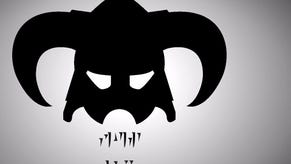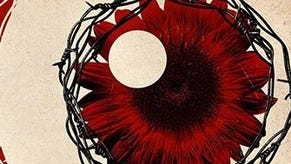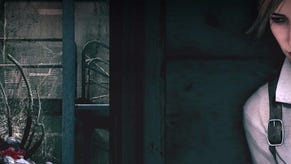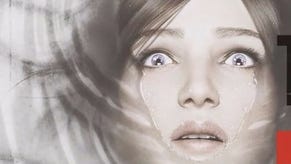The Evil Within review
An old kind of evil.
The Evil Within opens with the psychologically wrecked detective Sebastian Castellanos arriving at a mental hospital surrounded by the flash and wail of police cars and ambulances. The few seconds it takes for the building's double doors to creak open are all the time that the game bothers to spend on creating an initial sense of tension and dread. Inside the entrance, Castellanos finds a multitude of bloodied, slumped corpses. It's been nine years since Shinji Mikami directed a horror game with Resident Evil 4; none of that game's rhythm and pace has been lost in the intermission.
Neither has the tone of his work changed, from the B-movie dialogue to the taut gunplay. The Evil Within is also something of greatest hits of the director's finest ideas and moments. There's the crouched zombie munching on a cadaver who peers back at the camera over a rotten shoulder - a frame-for-frame rerun of the famous scene from the first Resident Evil on PlayStation. There are the familiar ponderous door animations, which ratchet up the tension each time you pass from one virtual space to the next; there are the balloon-bursting headshots. There's a mud-slung rural village and ambient storytelling about unethical scientific experiments that drove its residents to violence.
There are fat, mad friars who roam derelict churches. There are rabid super-dogs, creeping villagers who stare with bright eyes and wield torches or chainsaws - and there's your own a burgeoning armoury, which you are restrained from using liberally through the scarcity of ammunition. There are familiar sections during which you fight alongside a second, computer-controlled character, tending to their well-being while trying to maintain your own. This is a Mikami game from hilltop to catacomb, and it's undeniably the closest we've had to a direct sequel to his greatest work, Resident Evil 4.

There are also new traits that mark The Evil Within as a distinct proposition from the schlock-horror series with which Mikami made his name. The psychological horror that runs, spine-like, through each of the game's 16 lingering chapters is new. The unnerving props and characters (a soiled doll, a lank-haired monster woman who walks on all fours, a butcher's slab for carving humans) are borrowed as much from the work of film director Takashi Miike as from Mikami's favourite, George Romero. The game constantly messes with space, shifting the sets and corridors in disorientating ways. Camera filters are used to great effect, taking transparent freeze-frames and then smearing the frozen image over the subsequent action, in order to confuse and fuddle. As well as fighting and fleeing towering chainsaw-wielders, you find yourself pitted against characters familiar from contemporary Japanese horror films in the game's frightening boss battles.
The tonal divide is best exemplified by The Evil Within's 'safe' space, an area to which Castellanos can retreat in order to save progress and enjoy a moment's calm away from the storm of the main game. This area is an esoteric ward set within the mental hospital where the game opens. As such it is inherently unnerving. The door of your padded cell may be unlocked, but the corridors "smell of medicine" and decline. The chair in which you must sit in order to 'upgrade' Castellanos' abilities and weaponry - using a currency that's represented by green liquid, found in jars or pocketed from the dissolving corpses of your foes - has leather restraining straps; a wire helmet descends onto his head as if about to perform a lobotomy. The horror trope of the anachronistic mental hospital is over-familiar, but Mikami revitalises it here by making it the place where you find sanctuary, if never peace.

The attempt to straddle two distinct cinematic genres creates a tonal melange, but the fear effect isn't diminished. Mikami isn't afraid to use cheap shocks to contribute to your sense of mental fragility and unease. Time and again the director encourages you to look one way only to find some terror nurse or tentacle-faced monster directly in front of you when you turn back. Time and again the trick works, not least because it's coupled with other, less scripted ways of eliciting fear - carefully positioned lights that throw gigantic shadows, messages scrawled in blood on the walls, spectral laughter from unknown sources in random rooms, ghostly figures that appear, lunge and dissipate in an instant. The vocabulary is clichéd, but Mikami and his team at Tango Gameworks, through imagination and concentration, use it to create freshly alarming sentences.
There are, however, anachronisms in the design that take a while to adjust to. The camera is unwieldy and the control scheme is awkward (recommendation: move the resource management menu away from the analogue stick button). There are incongruous, simplistic puzzles and an opaque approach to stealth; there's endless rifling through drawers in search of something, anything to fend off the darkness. Many of Resident Evil 4's strongest designs have been removed: the resource management element of the suitcase, the shooting gallery mini-game (replaced by small stone statues that you must find and destroy for keys to item lockers), the way that Los Ganados would swarm the player, necessitating mob management as well as well-timed headshots.
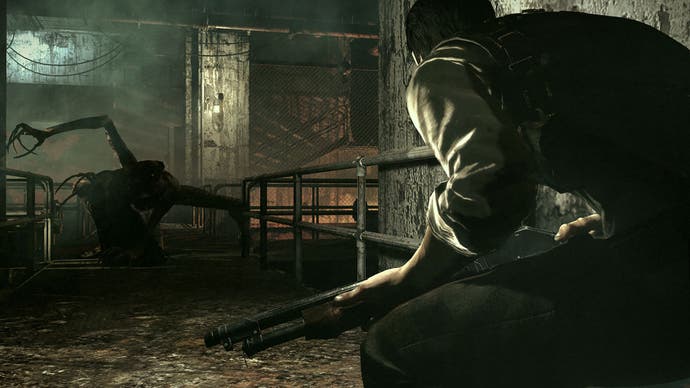
In their place, you can now burn your enemies with matches as a way to ensure they never fight again (a neat way to preserve that valuable and scarce ammunition). There's a simple crafting system whereby disarming traps via a mini-game provides you with parts that can be used to create different types of bolt for your crossbow. The mental hospital safe space is accessed via cracked mirrors (a system that enforces the narrative idea that Castellanos has been driven mad by the things that have happened to him and his family, triggered each time that he looks at his reflection), and you are drawn to these access points via the sound of Clair de Lune playing from a virtual gramophone in each room. In time, Debussy's piece becomes a siren call. The melody cuts through the horror and soothes, subtly reinforcing the ties between moon and madness.
The Evil Within is a generous game, lengthy but never repetitive, and the post-completion bonuses will thrill those who mined Resident Evil 4 for secrets long after the final credits rolled. Moreover there are jewels of design here to rediscover, traits and ideas that were lost by the many games that followed Mikami's earlier work. But it also eschews many of the modern improvements to the third-person action game, such as the ability to lock to cover or more general refinements to animation that make combat and movement flow more smoothly.
Shinji Mikami has yet to make a poor game, and The Evil Within does not blemish his record. But neither does the game enchant and disrupt in the way that Vanquish and the others managed. This is Mikami revisiting his past glories and, as such, it's both a delight and a disappointment.



